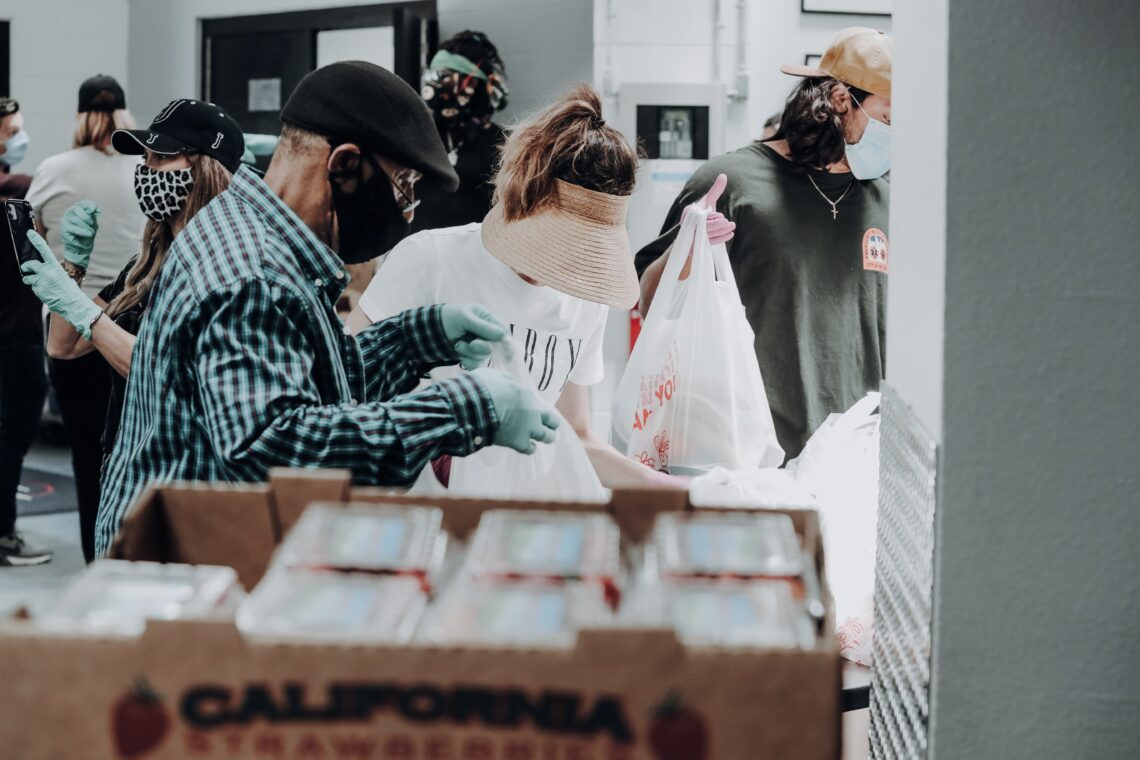
Solving hunger in Ontario
Almost a quarter of Canadians can’t afford groceries. Food insecurity affects low-income households the most. With food shortages, supply chain issues and inflation on the rise, food insecurity in Canada is increasing.
“Food insecurity is a symptom of poverty,” says Elaine Power, a professor in the School of Kinesiology and Health Studies at Queen’s University. “You can’t really fix food insecurity without fixing the underlying problem.”
The Food and Agricultural Association of the United Nations (FAO) explains that a food insecure individual is someone who doesn’t have enough money or resources for food.
To some, this might seem obvious. Yet, the solutions to solve food insecurity are mostly focused on providing food to hungry people, a temporary solution that does not solve the poverty factor.
Solving food security by solving poverty
Canada has an official poverty reduction strategy, it features 2020 and 2030 goals to reduce poverty by 20 per cent and 50 per cent, respectively. Reduction of food insecurity is listed as a main goal. The strategy was successful with a 30 per cent reduction in Canada’s poverty between 2015 and 2019.
The report mentions a limitation: it does not include the impact that the COVID-19 pandemic has had on marginalized groups specifically relating to poverty and food insecurity. Officials do not know yet just how much COVID-19 has impacted marginalized groups in Canada. However, the report acknowledges the effects have been overall negative.
“It’s been a tough time,” says Kim Zhao, a 23-year-old dishwasher from Toronto. “I usually skip lunch and when I’m working, my dinner is a staff meal.”
Zhao explains that restaurants will often cook a dinner for all the staff. That is so they can eat something while working through the night. “I don’t know how I’d be eating dinner if I didn’t have that.”
Some experts believe this could be a sign of a broader systemic issue.
“Governments have a responsibility to ensure that everyone has adequate income to meet basic needs,” Power says.
What would government intervention actually look like aside from pre-existing income support programs? These programs include the Canada Workers Benefit and the Guaranteed Income Supplement.
An old idea gaining popularity is basic income. Basic income would involve guaranteeing every resident would have a fixed amount of income per month. They would receive money if they did not earn enough. Some advocates, such as the Canadian Centre of Economic Analysis, argue for a universal basic income. This would involve giving every resident, regardless of income, a fixed amount of money to increase income.
The 2017 Ontario Basic Income Pilot, though abandoned early on, showed that pilot participants were happier and healthier than before. This was the result of simply earning more money to pay for necessities such as food.
Can food insecurity be reduced by growing food?
Some believe that a solution to food insecurity is by empowering people to grow their own food. In an era where self-sufficiency and hobby farms are gaining mainstream appeal, the idea makes some sense on the surface. If people are hungry, can’t they just grow and eat their own food?
“I have a small garden on my patio where I grow some veggies,” says Zhao. Her garden is made entirely of recycled buckets she got from work that her kitchen was throwing out. “I read this book on patio gardening which kind of exaggerated how much food you could get.”
Zhao says gardening is a fulfilling hobby. However, it isn’t as cheap, easy or effective as people might think. She recalls reading she could grow 10 pounds of tomatoes per plant, but only managed two pounds per plant. “Plus you have to buy the soil, the seedlings, the fertilizer — it adds up. I only save a few dollars in the end,” she explains.
Power says, “For the most part … [it’s] insulting to both those living in food insecurity and to farmers.”
She explains that growing food is difficult and involves a lot of resources — namely, land. Since many food insecure individuals and families do not own land, they couldn’t grow food even if they wanted to.
Community gardens, to Zhao, were a potential solution to the problem of land ownership. However, she is currently on a three-year waitlist to get a plot. “When I eventually do get there, there’s only so much I can grow in a single raised bed,” she adds.
“The idea that you could grow enough of your own food to solve your food insecurity is, well, not a reasonable idea,” adds Power.
Reducing food insecurity with free food?
Before COVID-19, demand for food banks in Ontario already exceeded the supply. The pandemic turned a pressing issue into an even larger crisis. The number of people experiencing food insecurity grew significantly. A 2022 Mainstreet Research report revealed that 38.5 to 41.5 per cent of Canadian households making under $50,000 might be eating less than they should. This is due to rising food costs.
The crisis has led to the invention of projects like Food Rx. This project is run in collaboration with FoodShare and the University Health Network. It targets food insecure individuals and consists of delivering a free box of fresh food every week.
“It might be weird to hear me call a project like Food Rx a stopgap solution… But that’s what it is,” says Sheldomar Elliott, the coordinator of Food Rx.
Elliott explains that although giving food to food insecure people is helpful, it does not solve the issue on a deeper level.
“We are well aware that it is still a temporary solution and will remain one until we see more political leadership actually challenging food insecurity and poverty,” he explains.
About the author
Eliot is a journalist for Youth Mind. His background is in English and creative writing at York University. When not writing, he studies medical laboratory science in Kingston, and enjoys hand spinning yarn, cooking, and gardening.







